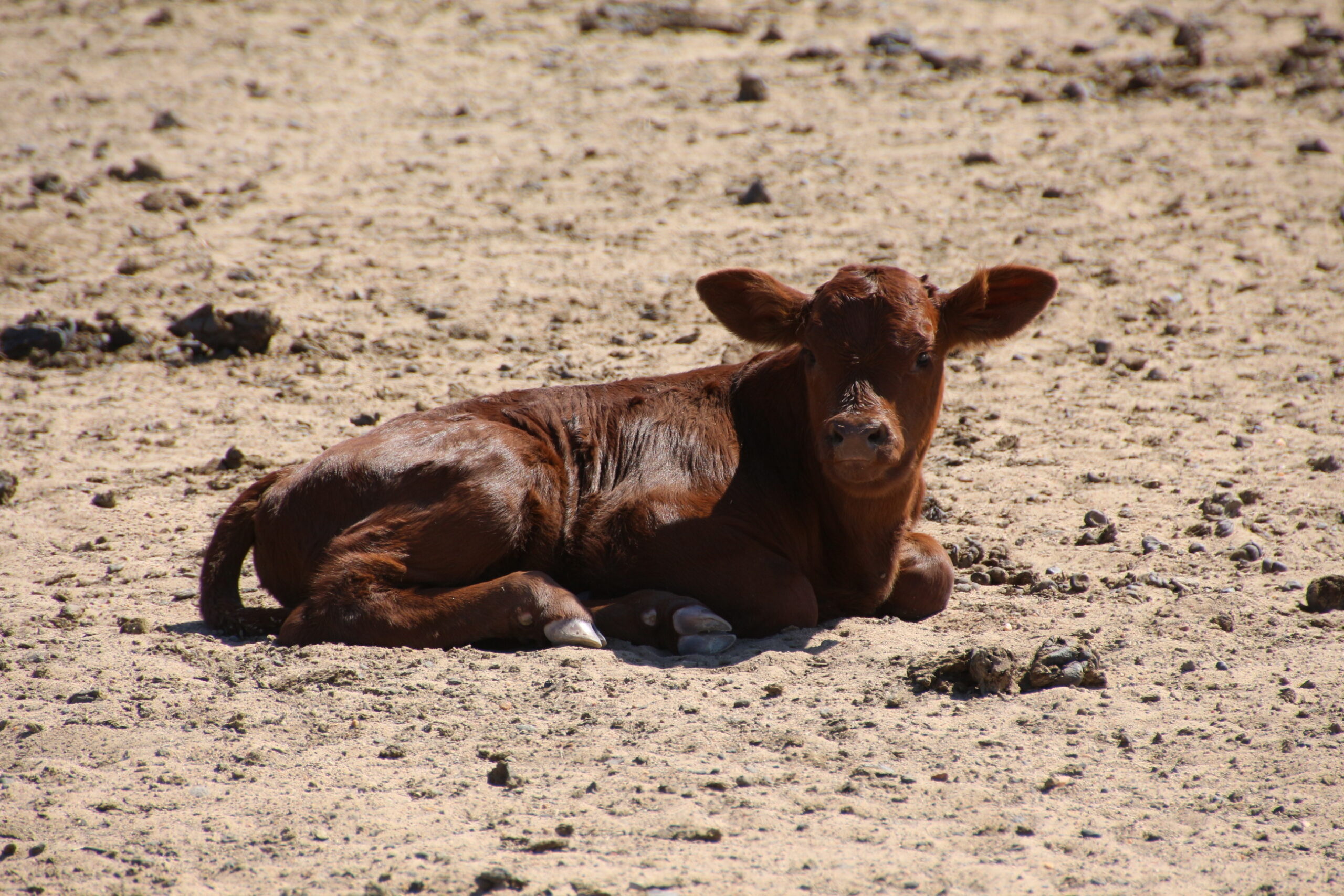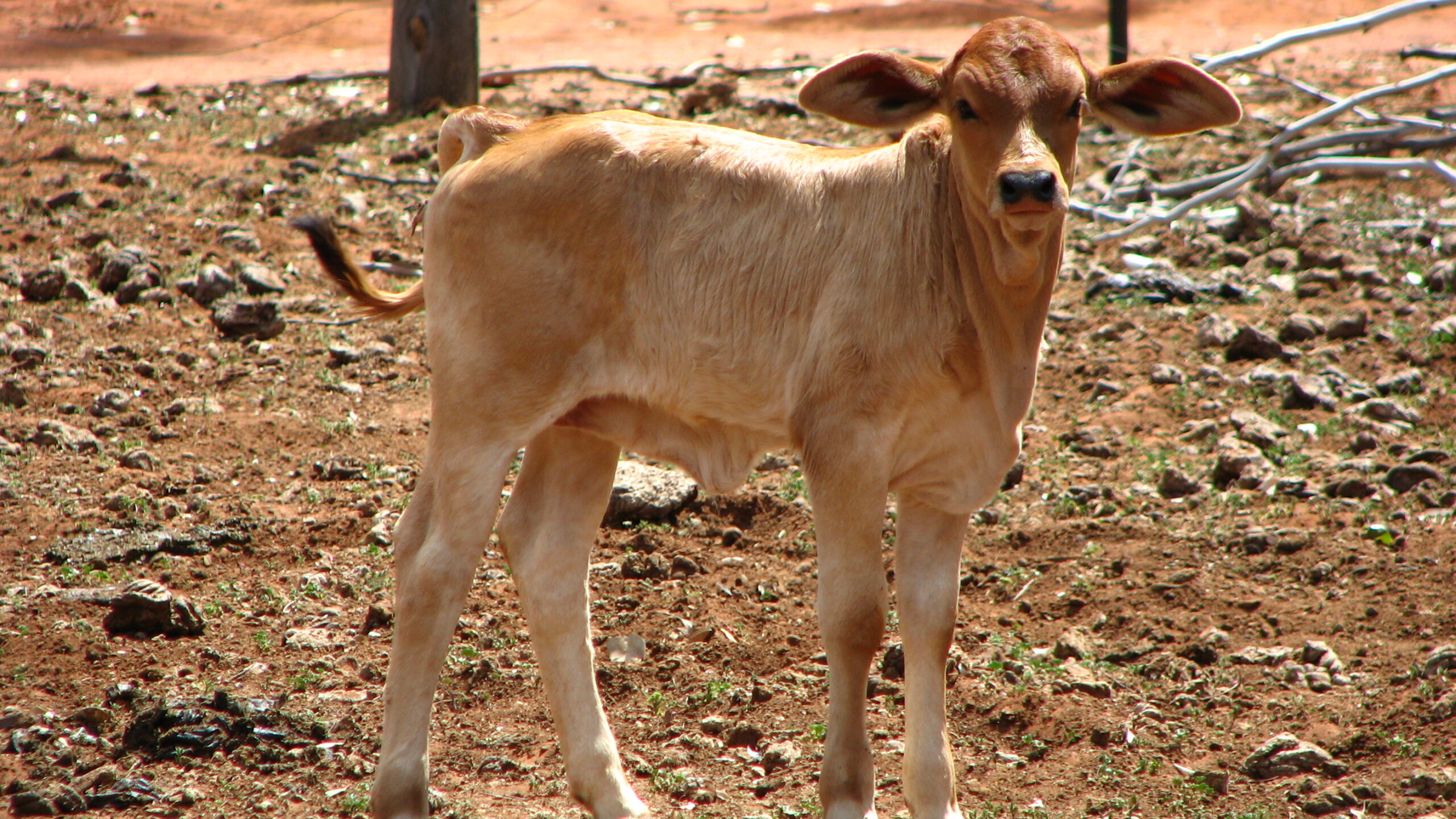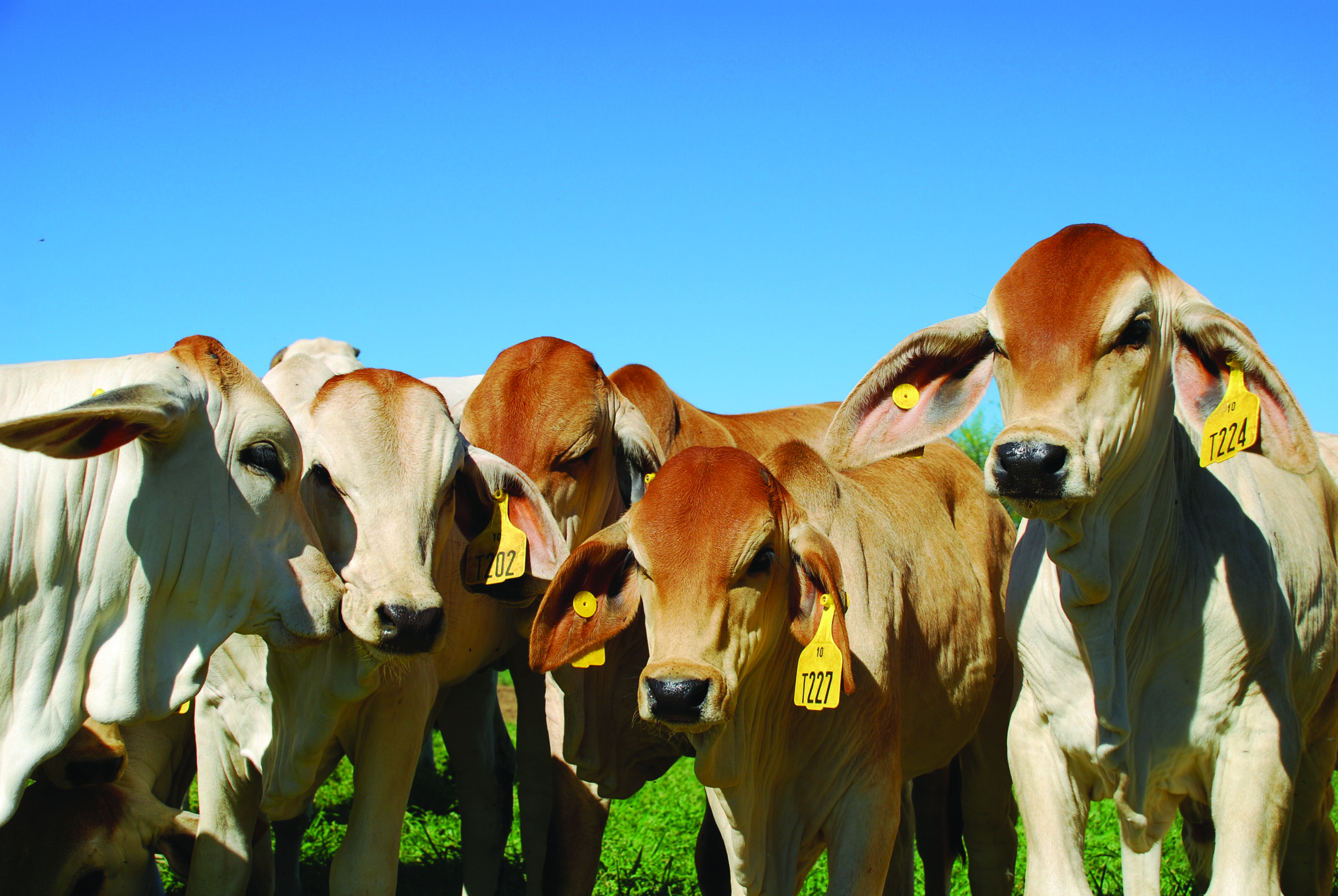Calf rearing
Rearing a newborn calf can be extremely challenging and requires much patience and commitment. The key to success is keeping the calf in a comfortable environment, well fed and free of sickness.
Calves must be kept in a clean environment with access to a dry and draught free shed area. During wet periods hand reared calves may need to be moved into the dry area until they get used to going there themselves.
Newborn calves | Dehydrated calves | Teat or bucket feeding
Controlling sickness
Weaning | Introducing solids | Tips for success
Newborn calves

Orphan calves often show signs of dehydration, depression, lack of appetite or scouring. If the calf is to survive, proper care during the first 24 hours is critical.
It is essential for the newborn calf to receive colostrum. Colostrum is the first milk that a mother produces. Colostrum provides passive immunity to disease and helps build up vitamin and mineral levels. The new-born calf should get colostrum within the first 36 hours of birth – either from a mother or artificial sources. A supply of frozen colostrum can be kept in the freezer, while some milk replacers also contain colostrum. Once the calf has received colostrum, it can be fed solely on whole milk or milk replacers. It is handy to have a bottle of colostrum in the freezer to feed newborn calves that may not have drunk from their mothers. Warm it up to 36°C before feeding and if you have ample supply, feed it for the first two days (normally up to 2L per feed), in the morning and evening.
Dehydrated calves

The calf should be rehydrated before getting any milk. Feeding a dehydrated calf with milk often results in scours and possibly death. Electrolyte mixtures are commercially available or can be mixed at home from 1 teaspoon table salt, ½ teaspoon baking soda and 125mL glucose in 1.2L of water. Electrolyte should be fed for at least 24 hours before milk is given.
Teat or bucket feeding
Cattle are ruminants and have four stomachs. At birth, the abomasum or fourth stomach is the only stomach that is functioning. Feeding using teats may be harder work however when a calf sucks, it triggers a reflex which causes a groove in the rumen – the oesophageal groove, to close and direct milk past the rumen and into the abomasum where it is digested. Using a teat may also stimulate saliva production and maintain fluid intake in scouring calves. Teats have to be kept clean and replaced when they deteriorate.
In contrast if a calf drinks from a bucket, the reflex is often not activated and the milk goes into the rumen. As the rumen is not functioning the milk is not digested and ferments causing the calf to scour. If a bucket is used, its base should be placed at least 30cm above the ground to help the oesophageal groove to close. To train a calf to drink from a bucket, back it into a corner, stand astride its neck and place two fingers moistened with milk into its mouth. Whichever method is used, each calf must receive a measured amount of milk daily.
As the calf grows and starts to graze, the other stomachs (rumen, reticulum and omasum) start to develop. Therefore, it is important to provide clean, good quality hay for the calf to eat to help stimulate rumen development.
Controlling sickness

Scouring can quickly lead to death. A scouring calf should be taken off milk for at least four hours and fed electrolytes. If scours continue, treatment with commercial medication may be warranted, in consultation with a vet. Scour medication should be kept on hand as early treatment can mean the difference between cure and the loss of the calf. Isolate sick calves.
Practicing good hygiene and discarding teats as they deteriorate will help control sickness in hand reared calves.
A fresh supply of cool clean water should be available at all times and will help keep calves healthy. Calves will begin to drink water between one and two weeks of age and, by six weeks, may drink 4–5L a day. Feeding milk once or twice a day does not supply enough water. Calves eating meal may foul the water trough necessitating regular cleaning.
Calves need to have contact with other animals whose rumen is developed to allow them to ‘pick up’ microbes that digest the food in the rumen. These microbes are thought to pass from one animal to another by licking and grazing common ground.
Weaning

Calves may be weaned successfully at a young age; however, providing some milk up to 12 weeks often gives the calf the best opportunity to grow. If the calf has been offered solids from one week of age, it might be weaned off milk after five weeks of age.
Weaning should be based on concentrate consumption of at least 650g of meal a day—not on age. As some calves will reach the target consumption earlier, it is best to feed concentrates separately with more than one calf.
Weaning can be abrupt or by reducing milk over a one-week period, whichever strategy you take, the weaned calf will require intensive management. Poor management and poor nutrition at this early age may result in a stunted calf that will never recover.
When selecting a feed source to wean your calf onto, make sure it will provide high quality nutrition. Young calves need a diet of 18–20% crude protein with high energy levels of about 11–12MJ.
Cleaning out feed troughs regularly will keep the feed on offer fresh and enticing, maintaining the rumen microorganism population.
Feeding solid feeds
Providing the calf access to hay and concentrates from one week will stimulate rumen activity, leading to a functioning rumen by 10–12 weeks of age.
The first two months
High quality baby calf meals or pellets are highly palatable, coarse-textured, are high in energy (12MJ ME/kg or better) and protein (over 16%) and low in roughage (less than 15%). These can be provided to the calf after about five weeks of age.
A simple homemade calf meal could consist of four parts cracked or crushed grain (oats, barley, maize or wheat) and one part linseed, soybean, peanut, copra or cottonseed meal. Adding a small amount of molasses will make the mix more palatable.
If your calf is not taking to the meal or pellet provided, you can encourage it by rubbing some on it’s gum after its feed of milk, or leaving a small amount of meal soaked in milk in a bucket.
By three weeks of age, the calf should be able to digest small amounts of calf meal or pellets, hay, and where possible, be given access to young green pasture. However, access to only green grass will cause scouring. All feed changes should be introduced slowly to support rumen development.
Beyond two months
Depending on the quality of the pasture, supplementary hay and concentrates may be needed until the calf is at least 120kg liveweight.
Adding a rumen modifier such as Rumensin® to grain mixes will assist rumen activity and help prevent coccidiosis. Rumensin can be included, according to the manufacturers recommendations, in premixed meals, pellets and molasses-based mixes. Care must be taken however to ensure it is not included in urea-based supplements, or provided to horses or other monogastric animals.
Calves need both rumen degradable and bypass protein from a natural source such as protein meals. Non-protein nitrogen sources such as urea are not suitable for young calves.
Good grassy lucerne hay is best for young calves as prime lucerne may cause scouring. It should free of mould and weeds. If pasture is scarce or of poor quality, supplement it with good quality grassy hay.
Tips for a successful calf-feeding program
- Milk replacers should contain at least 20% protein and 10% fat and no more than 10% starch and sugars (sucrose). Milk replacers should be reconstituted and fed as directed by the manufacturers.
- Increasing the proportion of powder is often recommended for once-a-day feeding to reduce the total volume required.
- When rearing a large number of calves, it is best to draft them according to their feeding habit.
- Milk should be given in separate feeds in the morning and evening, preferably at a regular time. As the calf gets older, one feed per day is acceptable – preferably in the morning with access to plenty of cool, clean water thereafter. Split feeding is ideal.
- It is essential to practice good hygiene at all times whilst rearing calves.
- Do not over-feed calves, especially during their first three weeks of life, as it may cause scouring. As a guide milk should be fed at 10% of the calf’s body weight per day. Thus, a 30kg calf should be fed at least 3L of whole milk per day.
- Start baby and weak calves on 250mL of milk, five times a day for the first 24–48 hours and work up to 2L twice a day.
- The best milk temperature is between 35°C and 38°C, but it may be fed as cold as 6°C.
- Do not suddenly change the quantity of milk being fed.
- Always provide clean fresh water.
- As calves grow they will drink more, however, milk replacer is expensive. It is often cheaper to supplement the calf with pellets/grain. Make this available to calves all the time. They will gradually increase their intake of a grain supplement as they grow. This will also make them easier to wean.
- Solid feed such as good quality hay and concentrates can be introduced in limited amounts from one to two weeks of age.
Rearing a calf can be very rewarding. By following the steps above you should be able to rear a healthy animal that will probably become the farm pet. Contact your local beef advisor for further information or discussion if needed.
The next step
Weaner supplementation →
Weaning — A critical component of herd management →
Making sense of early weaning (webinar recording) →
Getting ahead in drought through early weaning and planning (case study) →